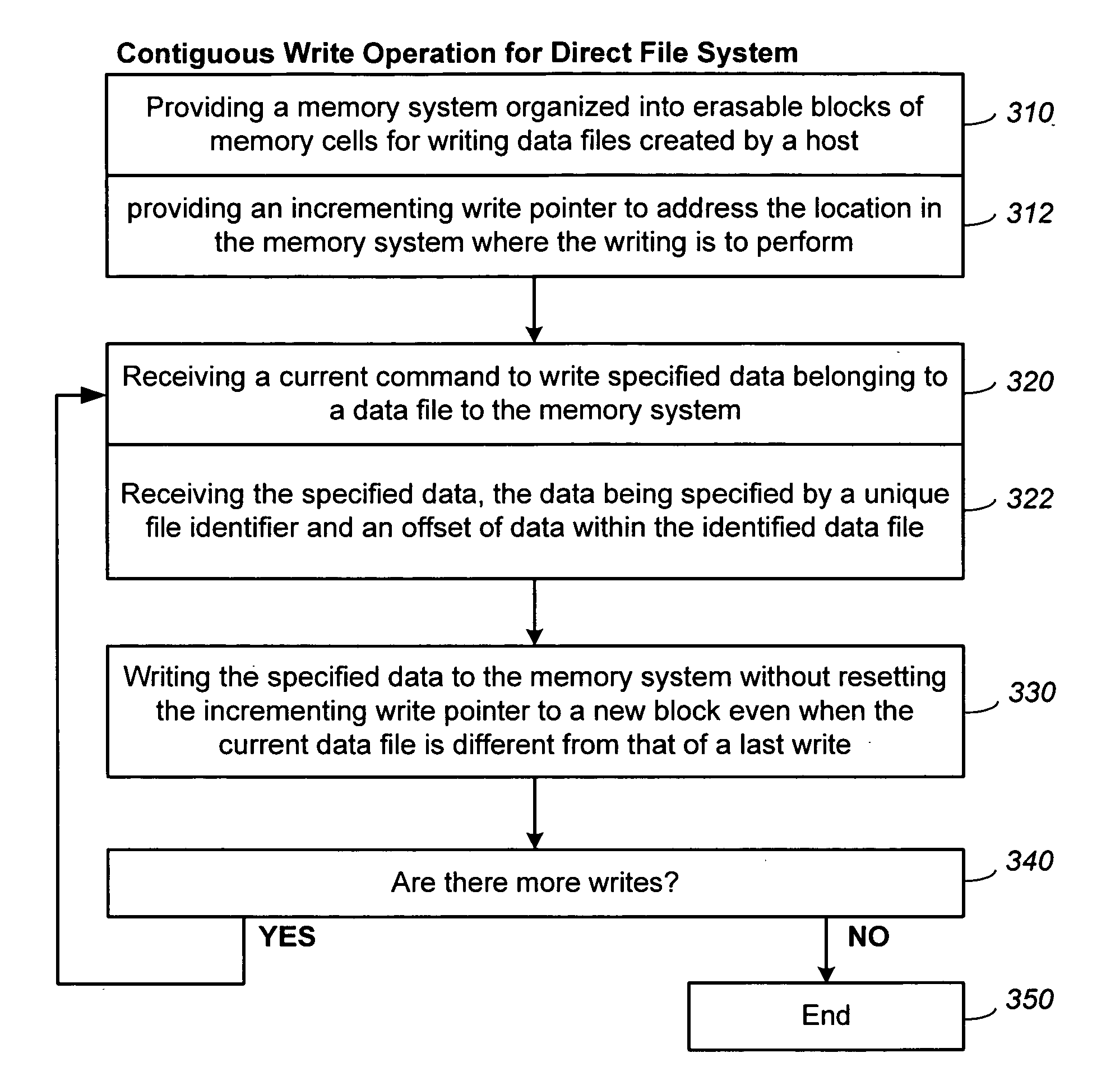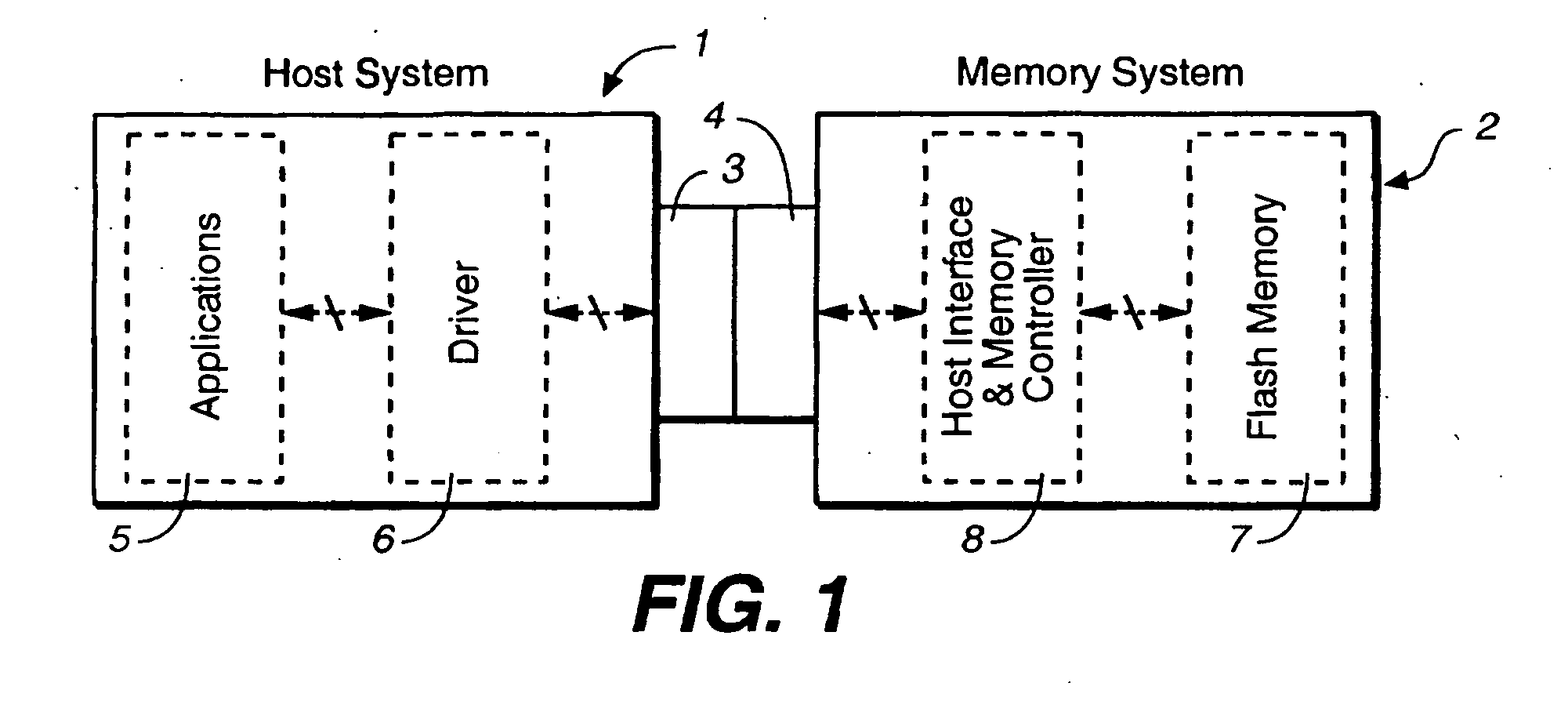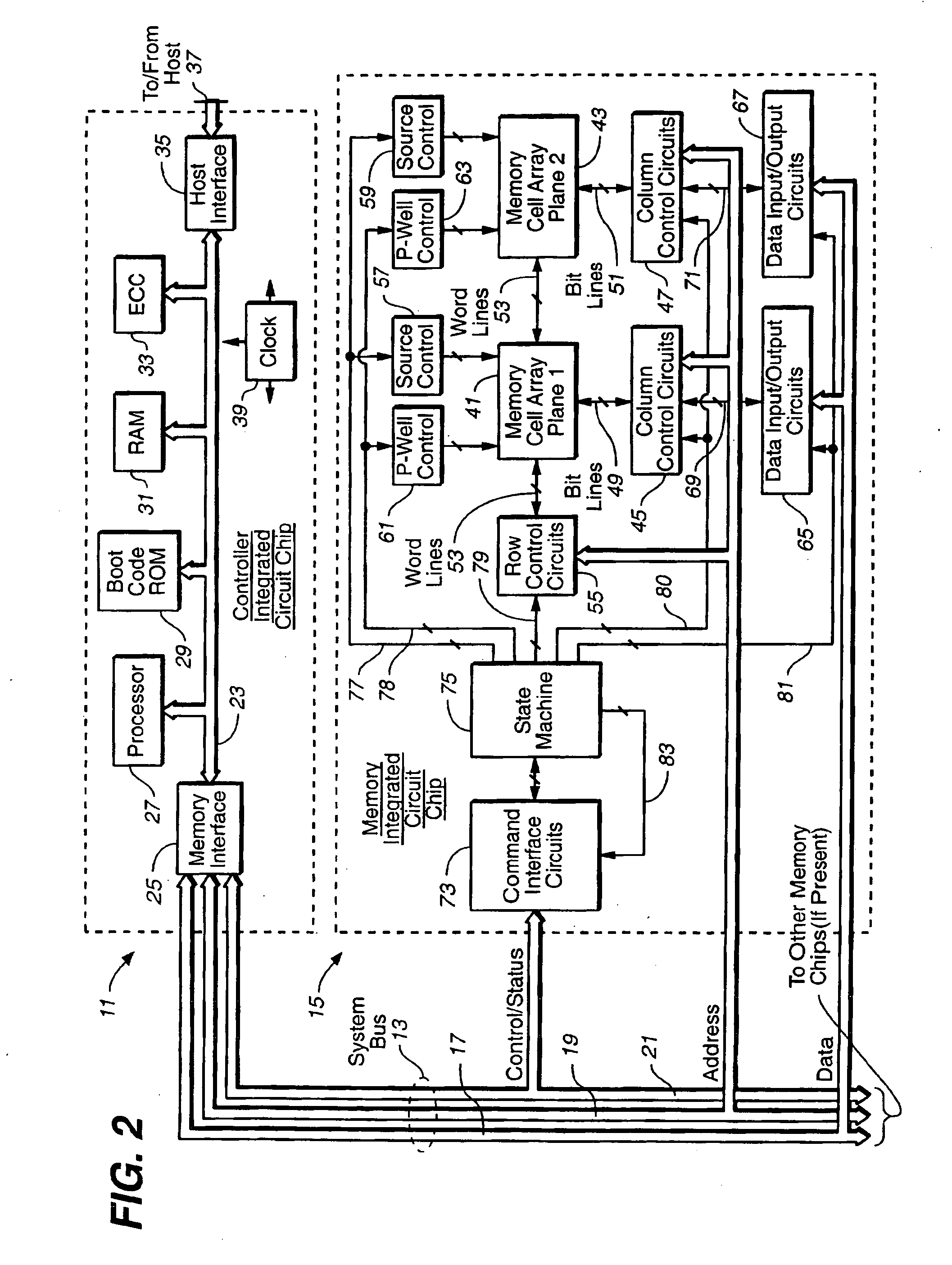Methods for memory allocation in non-volatile memories with a directly mapped file storage system
a file storage system and memory allocation technology, applied in the field of non-volatile memory systems that implement direct file systems, can solve the problems of incompatibility between two different addressing techniques, inability to communicate data with a system using, and original blocks with obsolete data that take valuable space in the memory, etc., to achieve high performance and efficient flash memory devices
- Summary
- Abstract
- Description
- Claims
- Application Information
AI Technical Summary
Benefits of technology
Problems solved by technology
Method used
Image
Examples
Embodiment Construction
Memory Allocation for File Data in a Direct File Storage System
[0149] According to one aspect of the invention, in a memory system with a file storage system, a scheme for allocating memory locations for a write operation is to write the files one after another in a memory block rather than to start a new file in a new block. When operated over a majority of blocks to be written, this scheme is particularly efficient for files that have a size smaller than that of a block. In this way, they are more efficiently packed into the blocks by being written closely following one after another, even if they belong to different data files.
[0150] In a preferred embodiment, multiple write pointers allow multiple files to be concurrently updated. Ideally, there should be at least one write pointer per file that has been opened for updating, but the number of write pointers, or number of write blocks should be limited to some predetermined number. If the number of opened files exceeds a limit...
PUM
 Login to View More
Login to View More Abstract
Description
Claims
Application Information
 Login to View More
Login to View More - R&D
- Intellectual Property
- Life Sciences
- Materials
- Tech Scout
- Unparalleled Data Quality
- Higher Quality Content
- 60% Fewer Hallucinations
Browse by: Latest US Patents, China's latest patents, Technical Efficacy Thesaurus, Application Domain, Technology Topic, Popular Technical Reports.
© 2025 PatSnap. All rights reserved.Legal|Privacy policy|Modern Slavery Act Transparency Statement|Sitemap|About US| Contact US: help@patsnap.com



